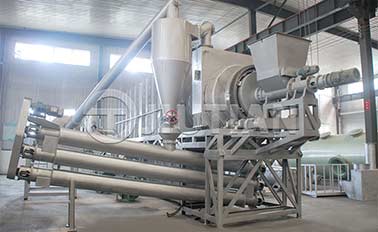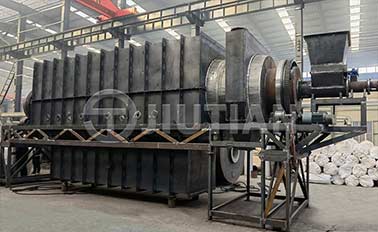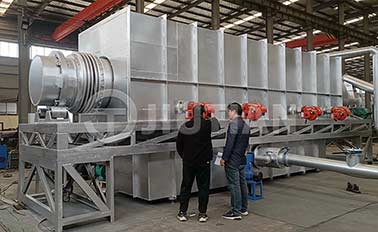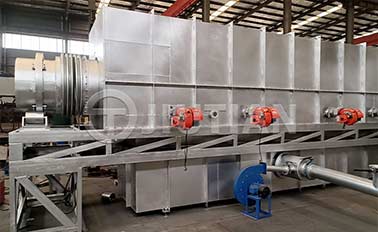Continuous carbonization furnaces typically use cooling gas or water to cool and collect the generated carbon powder. The specific cooling and collection methods depend on the design and operational requirements of the furnace, and the following are some common methods:
1. Cooling gas: After the carbonization zone of the carbonization furnace is completed, cooling gas, such as air or nitrogen, can be introduced to lower the temperature and discharge the carbon powder from the furnace. The cooling gas is transported through a pipeline system to a collection device or filter to separate the toner and gas, and then the toner is collected. This is a common method of collecting toner.

2. Cooling water: Some continuous carbonization furnaces can use cooling water to cool down and collect carbon powder. Water can enter the furnace through a pipeline system, be cooled, mixed with carbon powder, and collected in appropriate equipment. This method is usually used for high-temperature carbonization processes, which require rapid cooling of the generated carbon powder.
3. Vacuum system: In some advanced carbonization furnaces, a vacuum system can be used to reduce temperature and collect carbon powder. The vacuum system helps to lower the temperature and improve the quality of carbon powder by adsorbing or collecting the generated carbon powder while reducing the pressure inside the furnace.
Regardless of the method used, cooling and carbon powder collection are important steps in continuous carbonization furnace operation to ensure efficient production processes and effective collection and utilization of carbon powder. The selection of appropriate cooling and collection methods depends on the design of the furnace, production requirements, and raw materials used.

Location:Indonesia
Project Progress:Put Into Production

Location:Vietnam
Project Progress:Put Into Production

Location:Kenya
Project Progress:Put Into Production

Location:Canada
Project Progress:Put Into Production